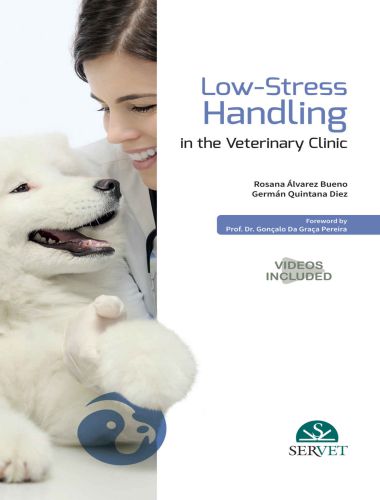Low-Stress Handling in the Veterinary Clinic
by

This book is intended as a practical guide to enable small animal clinical veterinary surgeons and their teams to improve various aspects of their everyday practice: how they understand and relate to patients and clients, how they manage their work, the handling of animals during different procedures, and the implementation of programmes to deal with behavioural issues. These aspects will have a highly positive impact on the wellbeing of the patient, the client, and the veterinary and support staff, with the implementation of smoother and effective procedures. Encyclopedia of Feline Clinical Nutrition
Low-stress handling provides a new approach to confronting veterinary clinic activity that reduces stress and therefore increases procedural efficiency. The main idea is to create an environment where the animal feels safe and comfortable, while clearly communicating what is expected from them.
The veterinary clinic represents a stressful and threatening environment for the animal because:
- They are in unnatural and unfamiliar surroundings.
- They are not normally given a chance to get used to the procedures carried out in a clinic, due to time constraints and an insufficient knowledge of learning theory, which leads to a negative emotional load that may increase with subsequent visits.
- Veterinary practices are full of different intimidating stimuli for animals, most of which are unknown or unforeseeable.
Low-stress handling aims to minimise these threatening stimuli and ensure animals remain comfortable throughout their time at the clinic, thereby promoting a more pleasant visit with less negative emotions and a better perception of the event. A more positive perception and processing of their experiences will result in a behavioural change by decreasing the animal’s fear, aggressiveness, and avoidance behaviours. In addition, this handling method will improve other organic factors: immunity, alterations in blood parameters, pain threshold, resistance to examination, and so on.
It will also reduce the tension felt by the owner, the vet, and their staff. Concepts, techniques, and theories such as dominance, forced immobilisation, the alpha roll, cages, confinement, and the use of force when handling animals should be eradicated from routine clinical practice. A single negative experience can condition a permanent fear response towards veterinary clinics, producing restlessness, attempts to flee, or aggression in future visits. Not only do animals benefit from low-stress handling, but also their owners and the clinic:
It improves the animal’s and client’s trust in the clinic.
It helps us understand how animals communicate and the science behind learning,
while advancing the use of protocols that make them feel more comfortable.
It increases safety for the veterinary team.
It increases the efficiency and fluidity of all work procedures.
It improves the relationship and communication with the client.
It establishes a stable, positive working environment that promotes teamwork.
Direct Link For Paid Membership: –
